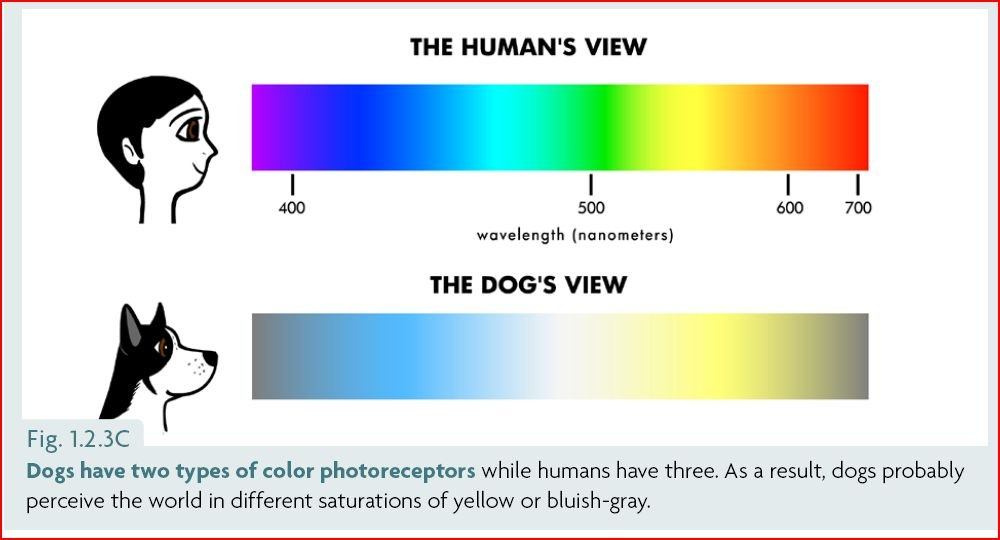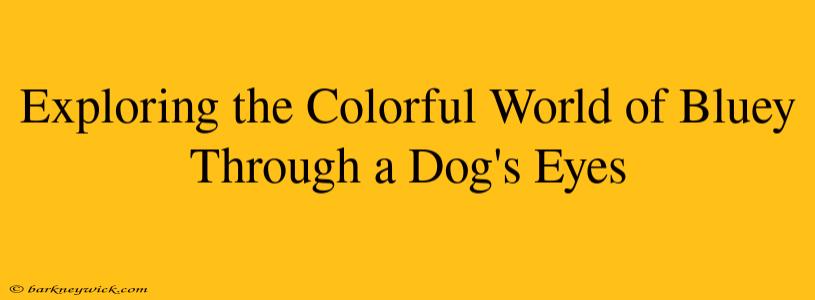Discover how dogs perceive the colorful world of Bluey and learn about canine color vision. Explore the science and practical tips for enhancing your dog's TV experience.
As I sat on the couch with my Australian Cattle Dog, Max, I couldn't help but notice his intense focus on the TV screen. The familiar theme song of Bluey filled the room, and Max's ears perked up. It was a moment that made me wonder - can dogs really see the vibrant colors of this beloved children's show?
A Personal Journey into Canine Color Vision
My fascination with how dogs perceive color began when I noticed Max's particular interest in Bluey. The show's bright, animated world seemed to captivate him in a way other programs didn't. This observation led me down a rabbit hole of research into canine vision and the science behind what colors dogs can actually see.
The Science Behind Canine Color Vision
Contrary to the old myth that dogs see only in black and white, research has shown that our canine companions can indeed perceive colors, albeit in a limited spectrum compared to humans.
Dichromatic Vision in Dogs
Dogs have dichromatic vision, meaning they have two types of cone cells in their retinas, as opposed to the three types found in human eyes. This difference results in dogs being able to distinguish primarily between blue and yellow hues.
According to a study published in the journal Proceedings of the Royal Society B, dogs can differentiate between blue and yellow, but have difficulty distinguishing between red and green. This research, conducted by Dr. Jay Neitz at the University of Washington, has been groundbreaking in our understanding of canine color perception.

Bluey's Color Palette: A Dog's Perspective
Given what we know about canine color vision, it's interesting to consider how dogs might perceive the colorful world of Bluey. The show's creators, Ludo Studio, have inadvertently created a visual feast that aligns well with a dog's color perception capabilities.
Colors Dogs Can See in Bluey
- Blue: The titular character Bluey appears in a shade that dogs can easily distinguish.
- Yellow: Characters like Bingo and Chilli have yellow-orange fur that would likely be visible to dogs.
- Contrasting backgrounds: The show often uses contrasting colors that would create noticeable differences even in a dog's limited color spectrum.
Why Dogs Might Be Drawn to Bluey
While the colors play a significant role, there are other factors that might contribute to a dog's interest in Bluey:
- Movement: The show's animation style features quick, energetic movements that can capture a dog's attention.
- Sound: The upbeat music and high-pitched voices of the characters fall within a range that dogs find engaging.
- Familiar shapes: The characters, while stylized, still resemble dogs, which might pique a canine viewer's interest.
Tips for Enhancing Your Dog's TV Viewing Experience
If you're interested in sharing Bluey or other TV shows with your furry friend, here are some tips to consider:
- Choose high-definition screens: Dogs can see images on HD TVs more clearly than on older models.
- Adjust the brightness and contrast: This can help make the images more distinct for your dog's eyes.
- Keep the volume moderate: While dogs may enjoy the sounds, too much volume can be stressful.
- Observe your dog's reactions: Not all dogs will be interested in TV, so pay attention to your pet's cues.
The Broader Implications of Canine Color Perception
Understanding how dogs see color isn't just about TV shows - it can have practical applications in various aspects of dog care and training:
- Toy selection: Choosing toys in blues and yellows might be more visually appealing to your dog.
- Training aids: Using blue or yellow objects in training exercises could potentially improve a dog's engagement.
- Environmental enrichment: Considering color when designing dog-friendly spaces can enhance their visual experience.
Conclusion: A New Perspective on Canine Companionship
As I watch Max's eyes follow Bluey and her family across the screen, I'm reminded of the unique way our canine friends experience the world. While they may not see the full rainbow of colors that we do, their perception is rich and complex in its own right.
The popularity of Bluey among both human and canine audiences is a testament to the show's thoughtful design and engaging content. Whether intentional or not, the creators have tapped into something that resonates across species.
So the next time you sit down to watch Bluey with your furry friend, take a moment to imagine the world through their eyes. You might just gain a new appreciation for both the show and your dog's unique perspective on the colorful world around us.
